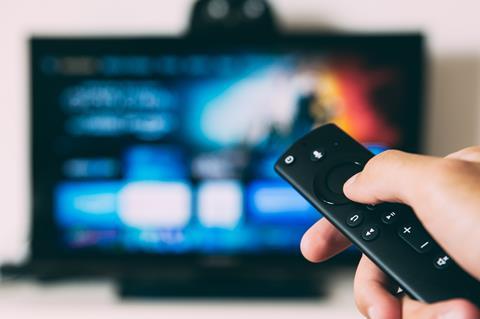Toby Richards, strategy and planning director at Once Upon A Time, explains where streamers can target advertising and partnerships

It happened without a ceremony, a gold carriage or a cloak, but a coronation has just happened in front of our eyes; context is now the new king.
To set the scene: until now, the success of a streaming service has been heavily dependent on delivering a steady stream of new releases. However, as platforms and channels continue to better understand the context in which viewers consume content, they gain insight into the role their content plays with them. The reality of this situation is that in the wake of the current wave of consolidation, content owners are discovering new opportunities in brand attribution, content, partnerships and even platform design.
By analysing when, where, and why viewers choose to watch certain shows or movies, platforms can make more informed decisions while unlocking their latent value from their back catalogues, increasing brand value and heightening their relationship to the consumer.
The return of the bundle
It is easy to misinterpret this shift as simply a return to the cable bundling of old. In some ways, it is, but it would be more cable-style bundling with a modern twist. Prime Video has already led the way by offering a bundle that includes TV and film content, audiobooks, home delivery, and music - taking a lifestyle approach to packaging content. It’s not a leap to suggest a future where we see a new wave of loyalty bundles that integrate TV and film content with essential everyday services. Imagine a subscription that combines your favourite streaming service with grocery delivery, banking perks, and fitness memberships. Such bundles could significantly enhance the value proposition for consumers, driving loyalty and engagement.
Contextual brand partnerships
Some streaming brands are already inhabiting this contextually rich land, often through their brand partnerships. Netflix’s’ partnership with Bumble is a great example which Netflix describes as, “Bumble members can celebrate their favourite Netflix shows while building connections on the women-first dating and social networking app. With Bumble’s new question game, Netflix Nights In, you and your matches will be able to put your insider knowledge to the test around some of our most beloved titles like Stranger Things, Squid Game, Love Is Blind, Outer Banks and more.”
In this context, subscribers’ Netflix membership intertwines as a dating activity, currently predominately fuelled by contemporary content. However, whilst your knowledge of the latest content is great for a first date as it gives you contemporary social currency, your legacy content loves will probably better signal your real identity alongside your many contextually driven content behaviours. Enter the role of back catalogue and the variety of mood-matching content.
Looking at the relationship between consumer context and content reveals the opportunity for streamers to offer a broader content repertoire - finding new value in existing back catalogue. Consumer behaviours hold the key – understanding whether the content provides a lights off cinematic event, social currency, comfort food or is simply visual radio as they are doing something else. In this context, a Disney+/Uber One partnership makes sense beyond tactical home delivery occasions and holds a future proofed contextual opportunity. Uber’s ‘immediacy’ value combining with Disney’s ‘physical and digital’ entertainment halo becomes an authentic platform for context informed innovations.
The money in your pocket
All of this is taking place against the backdrop of rising churn rates for SVOD platforms. With less disposable income, viewers are having to be economical with where they spend their money, so streamers have to present their offering as value for money with added benefits. It’s therefore not surprising to see brands look to tap into the markets of compatible partners – whether that’s taxi services, banking, or insurance.
Frow where people to watch, how they watch, to convincing viewers to part with their hard earned cash, everything is now being driven by the context within which audiences make these decisions and what they do once they’ve decided to engage in the content. Although this can be viewed purely as a sense of monetisation of context, it paves the way for an exciting period of consumer innovation aimed at entertainment and consumption. Context is king, long live the king.

Toby Richards is strategy and planning director at Once Upon A Time








No comments yet